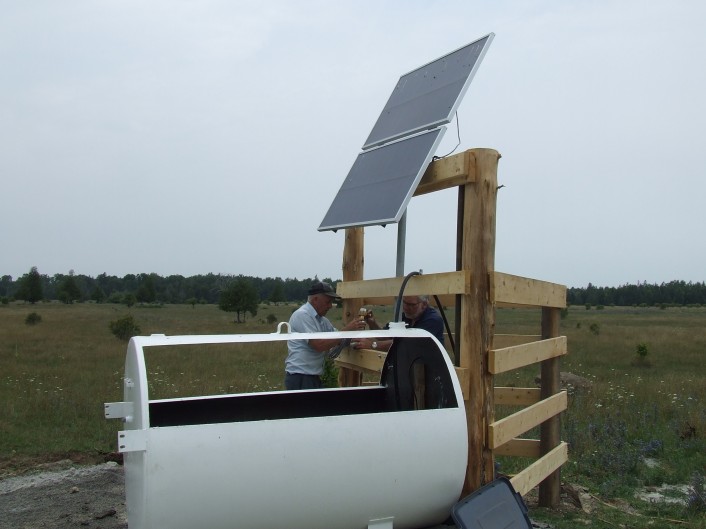The thieves probably struck in the dark, the universally-favoured time of criminals. Maybe they had a pick-up truck or two, someone to act as a lookout, and a couple of others with a simple tool bag.
There wasn’t any thought for the danger posed by cattle spilling out onto the road. A couple of hours work was all it took to put a dent in years of effort out on the Carden Plain. When the job was done, ranchers, private land owners and the Couchiching Conservancy had lost a dozen steel gates, and most of a solar well system; they were kind enough to leave the hole in the ground.
Police are investigating the late August thefts, but more than $5,000 in equipment is probably gone for good.
This is “stewardship” in a modern land conservation organization. Sometimes eyes glaze over when conservationists use that word. It’s a term used often without conveying much useful information. It covers everything from making lists of plants to cleaning up asphalt shingles dumped in the bush. Out in Carden, just east of Lake Dalrymple, stewardship over the next few weeks will include replacing stolen gates and spot-welding them in place in hopes of deterring crooks.
But what is it we’re up to out there with farm gates and solar-powered well systems? Why do conservationists have so much in common with cattle ranchers?
People travel from all over the world to see a place that most of us who live around here fail to give a second thought. The Carden Plain is home to globally-rare spots known as alvars. These are limestone plains with little or no soil, found only in a few spots around the Great Lakes and in the Baltic region of Europe. You have to go back 15,000 years or more to understand these rare spots. At the end of the days when glaciers towered two kilometers or more above this area, the alvars of Kirkfield were part of an enormous spillway, where torrents of melt water roared out of the ice and scoured the soil off the land as it made its way toward the Altantic Ocean. After the waters receded, a special community of tough plants moved in. They’re still there today in small, fragile communities. Grasslands and wetlands also benefit from the shallow soil which makes it tough for succession forests to move in. It’s bird heaven.
But where wild fires, native grazing animals and perhaps aboriginal fire management kept these plains open, cattle now do the job. Ranching has enjoyed modest success on the plain, making it part of the local culture for more than 150 years. The grasslands can sustain small herds, which in turn keep the alvars and grasslands open. By working with ranchers to keep cattle on the land in an environmentally sustainable way, the Couchiching Conservancy has been able to realize its goals of habitat restoration for grassland birds, including the endangered eastern loggerhead shrike, and more recently a list of other endangered species being added to an ever-growing list. Often that work involves fencing in pasture, and keeping cattle out of creeks and wetlands by providing alternative water sources like the solar system that was recently stolen.
Not that the thieves would be interested in any of that.
As is often the case, “stewardship” is about cleaning up after the thoughtless and self-interested. But we’re here for the long haul – both the ranchers and the conservationists. We believe in what we’re doing, and that’s as good an inoculation against thievery as any.
Mark Bisset is the Executive Director of The Couchiching Conservancy, a non-profit, non-government land trust dedicated to protecting important natural spaces for future generations. For more information or to support the conservancy, go to www.couchichingconserv.ca.

